Measures of protection and adaptation of vulnerable groups remain on paper only and are not being implemented, experts say.

Rampant disaster
According to the Ministry of Emergency Situations (MES), over 240 cases of mudslide were registered in Kyrgyzstan from April to July 2024. As a result, at least 17 people, most of whom were children, have died after the rampant disaster.
Thus, the mudflow in Nooken district of Dzhalal-Abad region carried away a 10-year-old boy on June 17, and a 5-year-old boy died as a result of the mudflow in Batken region on June 24.
On June 28, mudflows occurred in Noookat district of Osh region. Back then, nearly 10 people have died, most of them were children and teenagers. On July 14, mudflows occurred in Osh – the second largest city in the country. As a result, a woman and three children have died as well as the market worker.
Mudflows destroy roads, bridges, flood villages, houses, yards, and cause severe damage to citizens. According to reports, mudflows from April 20 to July 1 caused damage in the amount of over 170 million som (almost two million dollars).
According to Akylbek Mazaripov, deputy minister of emergency situations, the main causes of mudflows are climate change and abundant rainfall. He reminded that Kyrgyzstan is a mountainous country and the republic has many places that are exposed to mudflows.
“Compared to previous years, we really had more mudflows,” Mazaripov said. “If we compared the figures, last year we had roughly 33 mudflows, and this year the number is over 240.”
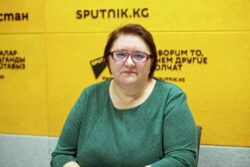
Olga Strizhantseva, head of the laboratory of surface water resources of the Institute of Water Issues and Hydraulic Power Industry, National Academy of Sciences of the Kyrgyz Republic, noted that scientists started to speak about climate changes in various latitudinal zones, including Kyrgyzstan, since the middle of the 70s of last century. According to her, researches have shown that there have been changes in air temperature and atmospheric precipitations.
“Thus, weather data analysis has shown that by 1990 and thereafter, in early 21st century, the mean annual temperature of air across Kyrgyzstan has increased by 1.5-2.5 degrees,” the expert said.
According to Strizhantseva, today the number of warm days has increased in Kyrgyzstan and the winter period has decreased to 2-2.5 months. Thus, a shift is taking place in climatic seasons.
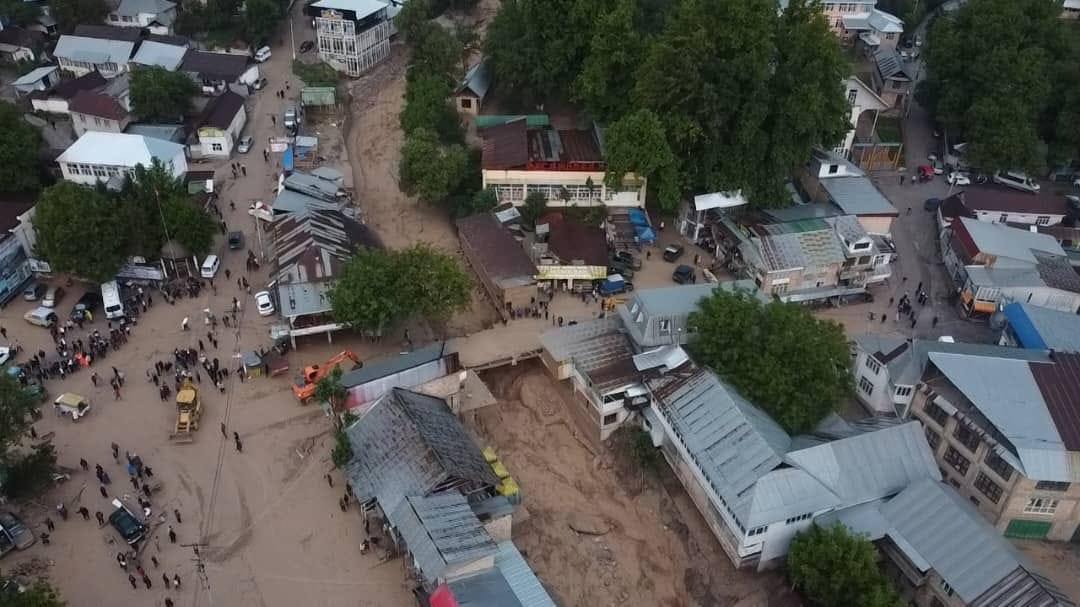
“There is also the increase in the total positive temperatures and they occur earlier. The warmth that we have in our territory has become more intense. Firstly, it leads to the increase in the growth season, and, secondly, to earlier seasonal floods. Such increase in the length of the warm weather and shift in seasons show the climate change in our territory,” she said.
As to precipitations, they are more intense in winter and spring than in hot season. According to Strizhantseva, on the one hand, intense precipitation is better in winter as it leads to more snow in the mountains and more water in rivers. But, on the other hand, spring precipitation plus intense snow melting in the mountainous area lead to the water runoff via rivers and can turn into such phenomena as mudflows and floods.
“It is a natural thing that people can suffer from it, and sometimes it can lead to tragedies. It is one of the most dangerous phenomena, which number increased due to climate change,” Strizhantseva said. “But we cannot say we did not have them at all earlier. Now they have become more and we learn about them more often because we have communications and alerting system.”
Why women and children are most vulnerable to climate change
According to specialists, the consequences of climate change and occurrence of various natural disasters do not have an equal impact on all. Women and children are more vulnerable for a variety of causes.
According to Akylai Muktarbek kyzy, national expert in gender issues for the National Human Development Report, UNDP, women and children often do not have proper access to information about natural disasters and to participation in decision-making at the level of a family and the community.
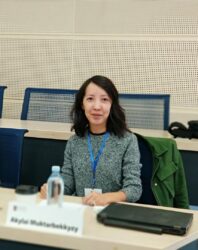
“This inequality undermines the capability of women to get prepared for natural disasters, effectively respond and recover afterwards,” Akylai said.
Moreover, according to the specialist, global researches and researches held in Kyrgyzstan show that women and children are more susceptible to health issues related to climate changes.
For example, the rise in air temperature and poor air quality in the premises because of the use of dirty fuel for heating and cooking can lead to respiratory and cardiovascular diseases, as well as to adverse effect on pregnancy and foetal development. Keep in mind that nearly 70 per cent of people in Kyrgyzstan still use dirty kinds of fuel, mainly coal.
According to Akylai, during climate shocks such as floods or landslides women and children also face limited mobility.
“Cultural norms often limit women’s mobility and they are usually responsible for taking care of young children and seniors. It hinders them from quick and safe evacuation during emergency,” she said.
According to Anna Arkhangelskaya, advisor in international projects of the Asian Development Bank, World Bank and UNDP, crop yield can decline amid climate change.

“There are researches that show that amid food shortages women prefer feeding children and other family members, and can starve themselves, which makes their health worse,” the expert said.
Moreover, according to Arkhangelskaya, women feel more vulnerable to climate change consequences in certain periods of life such as pregnancy, delivery and baby care. At these moments, they need special care and comfort, access to energy and food.
Experts emphasise that economic inequality deepens women’s vulnerability.
“Usually, women have fewer economic resources and savings than men do. Because of that, it is more difficult for them to recover after climate losses and invest in measures to adapt to climate change such as improvement of living conditions or sustainable agricultural practices,” said Akylai Muktarbek kyzy.
Anna Arkhangelskaya added that many women in Kyrgyzstan are busy doing household chores. Natural disasters and their consequences lead to the loss of their income, as well as the risks of inability to pay loans. The expert indicated the increased vulnerability of single mothers and women who head households, who have to be responsible for the wellbeing of their families, including children, elderly parents and relatives who need special care.
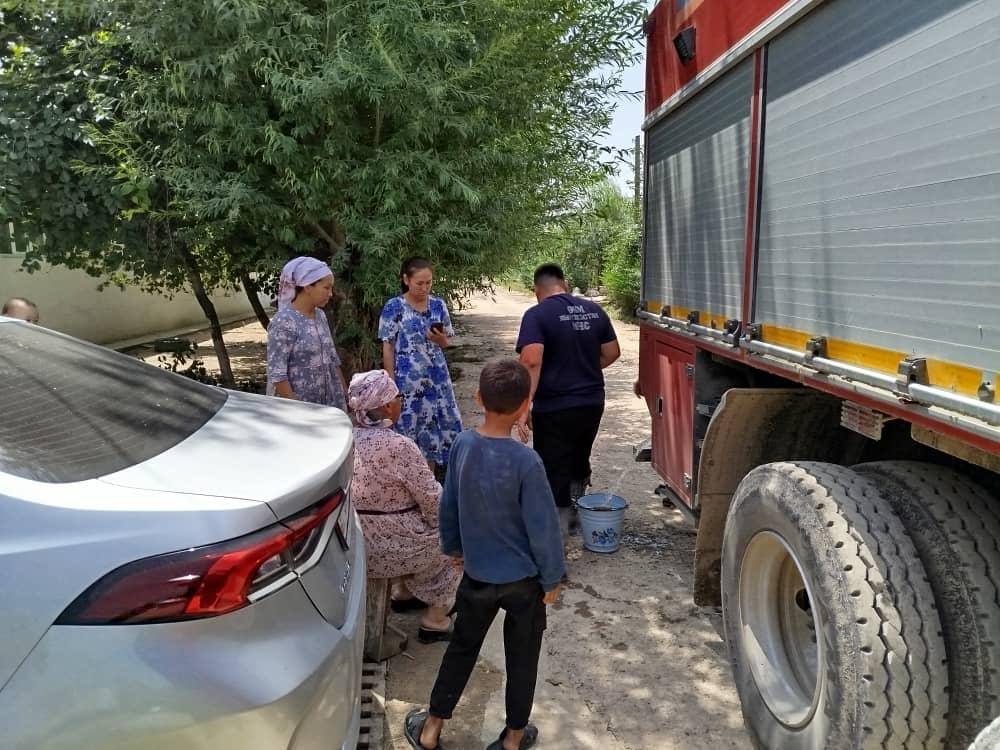
Children is another thing. According to Arkhangelskaya, children have an underdeveloped immune system, and they can get sick faster from extreme weather conditions or polluted environment. Moreover, children depend on adults, cannot always provide themselves on their own in critical situations.
“Amid water shortage, there is a risk of acute enteric infection in children. In other words, it is impossible to impart good hygiene skills to them as there is a shortage of water. If a child gets an intestinal infection, the woman is the one who is responsible for taking care of them,” Anna said.
In turn, Akylai Muktarbek kyzy emphasised that climate shocks and natural disasters may disrupt the educational process for children. Thus, schoolchildren have to miss school. Thus, children living in places more vulnerable to climate change will likely be behind their peers in knowledge and skills, which will have a negative impact on their university admission and employment.
At the same time, further forecasts are deplorable. According to Anna Arkhangelskaya, according to climate change scenarios, the frequency of extreme weather conditions related to climate change will increase.
What about the data?
There is no full data reflecting the vulnerability of women and children to climate change. No decision can be discussed without such data and researches.
“Gender consideration in development and implementation of measures to change the climate is relevant for the Kyrgyz Republic. In the meantime, the data is insufficient to reflect the issues of vulnerability and adaptation to climate change,” according to the report of the research “Climate change and gender issues in Batken region”.
The Nationally Determined Contribution (NDC) specifies the lack of researches and the gender aspect data in case of climate change.
NDC is a plan of action and goals on reducing greenhouse gas emissions, which every country develops on its own and states in the framework of the Paris Agreement to fight global warming.
As noted, issues identified during NDC development include: low level of participation of women in local administrations of natural resources, lack of gender analysis of climate change consequences, which makes it difficult to distribute risks, and the lack of mechanisms of fair access to natural and social resources, which can lead to conflicts. These issues along with other tasks will supposedly we solved by NDC by 2030.
How to protect?
According to specialists, a multipronged approach is needed to reduce risks and to protect people from natural disasters, especially most vulnerable groups, which includes both participation of the state and citizens.
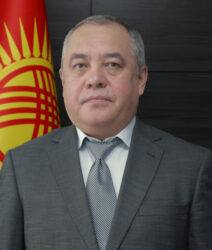
According to Akylbek Mazaripov, deputy minister of emergency situations, every person has to follow the recommendations of MES and rescue workers, first of all.
“If we announce a storm warning via various communication channels, people should follow the advice and avoid traveling to dangerous areas where mudflows, avalanches and rockfalls are expected,” he said.
Secondly, according to Mazaripov, every person should change their attitude to natural disasters and be aware of their own role and responsibility.
“For example, houses should be built in safe areas, far from zones prone to mudflows. People should not first build and then demand protection. They should observe safety measures first,” Mazaripov said.
He emphasised that local services always raise awareness and give recommendations to local authorities to ensure safety and security of local residents of any given village, district or place.
“It is important to point it out and comply with all the instructions,” he said.
According to Akylai Muktarbek kyzy, expert in gender issues for the National Human Development Report, UNDP, to raise awareness and preparedness of the people it is necessary to spread knowledge of climate risks and adaptation measures via public centres, schools and mass media.
Sellers of the flooded central market of Osh at the meeting with the chair of GKNB. Photo: MES
“It is critical to take account of gender particularities when developing and implementing the programmes so that information and resources are available to everyone, including women and girls,” she said.
Moreover, according to the specialist, the programmes on sustainable agriculture and rural development need to be strengthened. It can include training of farmers to contemporary methods of farming, which are better adapted to changing climate conditions, as well as provision of access to more resistant varieties of seeds and irrigation techniques.
In turn, Anna Arkhangelskaya, advisor in international projects of the Asian Development Bank, World Bank, said that it is necessary to develop and introduce special state support programmes that include sustainable living conditions, i.e. access to clean water and sanitation, access to clean energy sources and cooking techniques, heating and air conditioning, as well as educational awareness campaigns to promote emergency preparedness.
“It is necessary to improve participation of women in decision-making and planning of climate strategies. It will allow using their knowledge and experience for a more effective risk management and creation of sustainable communities,” she said.
And the equally important point is the need to provide women with access to such resources as land, loans, education, to strengthen their adaptive abilities and reduce the level of poverty and inequality.
According to Akylai Muktarbek kyzy, these can be programmes to create jobs, as well as measures to support small business and entrepreneurship. Creation of microfinance programmes and cooperatives can help women get access to loans and savings, which will improve their economic resilience.
Why does it matter?
Generally speaking, according to experts, introduction of the gender dimension in the climate change adaptation policy starts to call attention, but implementation is still erratic. According to Anna Arkhangelskaya, the issue of impact of climate change and natural disasters on women and children in Kyrgyzstan requires further study and heightened attention to the issue.
According to her, it is important to continue the research in order to grasp the issue and to develop effective strategies of protection of most vulnerable groups. Deeper understanding of the roles of women and men in the sectors affected by climate change will be a firm basis for developing relevant programmes.
“It is necessary to carry out a widespread awareness raising campaign, propaganda to tell that women are more prone to climate change, but they are also the so-called ‘change agents’. According to researches, women are more prone to rational, delicate use of resources, so these qualities should be used for the good of the society,” Anna said.
In turn, Akylay Muktarbek kyzy said that strengthening the role of women in decision-making processes and risk management could promote a more sustainable development of society, in general.
“Women are not only passive members of the society and ‘victims’ of climate changes, they have a great potential that may be and needs to be unlocked. Protection of health and welfare of children is the investment in the country’s future as they are the next generation that will shape its face,” the expert said.

